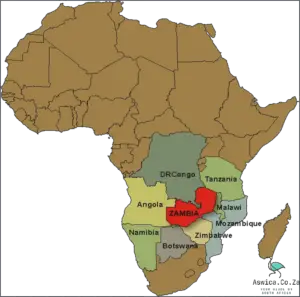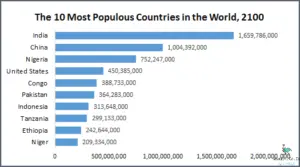
Nelson Mandela is the first president of South Africa. He was elected in 1994 and served until 1999. He is also the first black president of South Africa.
Contents
- 1 Who Is The First President Of South Africa
- 2 Rise of the African National Congress: The role of the ANC in the fight against Apartheid
- 3 Nelson Mandela: His journey from political prisoner to President of South Africa
- 4 Inauguration of Nelson Mandela: Details of his inauguration as the first democratically elected President of South Africa
- 5 Conclusion
Who Is The First President Of South Africa
Nelson Mandela, born on the 18th of July 1918, was the first democratically elected president of South Africa, after the fall of the apartheid regime. He was elected in 1994, and served as president until 1999. Mandela was a civil rights activist and a leader of the African National Congress, who fought for the freedom of all South Africans, regardless of race. As president, he worked to heal the nation’s wounds and unite the country. He championed a policy of reconciliation and forgiveness, earning him the Nobel Peace Prize in 1993. He is remembered as a symbol of freedom and hope, and continues to be an inspiration to people around the world.
Rise of the African National Congress: The role of the ANC in the fight against Apartheid
The African National Congress (ANC) has played a crucial role in the fight against Apartheid in South Africa, both before and after its official formation in 1912. The ANC is the oldest and largest liberation movement in South Africa and has been at the forefront of the struggle against racial discrimination and oppression ever since.
The ANC is a multi-racial, multi-cultural, and multi-class organization that has been instrumental in the struggle for human rights, racial equality, and economic justice for all South Africans. The ANC was the main political force behind the overthrow of the Apartheid regime in 1994, and has since been in power in South Africa.
The ANC’s roots in the struggle against Apartheid can be traced back to the formation of the South African Native National Congress (SANNC) in 1912. The SANNC was established to fight for the rights of black South Africans and to highlight the injustices of the Apartheid system. In the early years, the SANNC focused primarily on legal challenges and lobbying efforts, but its focus shifted over time to a more militant approach.
In 1944, the SANNC was renamed the African National Congress, and under the leadership of Nelson Mandela, the ANC became increasingly involved in direct action and civil disobedience. Mandela himself was arrested on several occasions for his involvement in the struggle against Apartheid, and the ANC was declared an illegal organization by the South African government in 1960.

In the decades that followed, the ANC continued to fight against Apartheid through acts of civil disobedience, strikes, and other forms of protest. It was also one of the signatories of the Freedom Charter, a document that outlined a vision of a just and equitable South Africa.
The ANC was instrumental in the negotiations that led to the end of Apartheid in 1994, and Nelson Mandela was elected as the first democratically elected president of South Africa the same year. Under Mandela’s leadership, the ANC pursued policies aimed at addressing the economic and social inequalities that had been created by apartheid.
Today, the ANC is still the ruling party in South Africa, and its struggle against racial discrimination and oppression continues. While the ANC has faced criticism for its policies and its failure to address the economic disparities that continue to exist in South Africa, its role in the fight against Apartheid remains an important part of its legacy.
Nelson Mandela: His journey from political prisoner to President of South Africa
Nelson Mandela is an iconic figure in South African history and the world at large, renowned for his fight against the oppressive Apartheid regime in South Africa. His journey to becoming the first democratically elected president of South Africa was a long and arduous one, filled with hardship and sacrifice.
Mandela was born in the village of Mvezo in the Transkei region of South Africa in 1918. He was raised in a traditional African family, and was educated in the local schools, eventually studying law at the University of Witwatersrand. In the 1940s, Mandela joined the African National Congress (ANC), a political movement devoted to ending racial segregation and discrimination against black South Africans.
In 1960, after a peaceful protest against Apartheid laws led to the Sharpeville Massacre, Mandela was arrested and charged with treason. He was found guilty and sentenced to life in prison. For the next 27 years, Mandela was imprisoned on the notorious Robben Island, where he was subjected to inhumane conditions and solitary confinement.
Despite his incarceration, Mandela remained active in the struggle, becoming a symbol of the anti-Apartheid movement. He wrote extensively, and his letters from prison were widely read and circulated. He also conducted negotiations with the South African government, eventually leading to the dismantling of the Apartheid regime in the early 1990s.

In 1994, Mandela was released from prison and became the first democratically elected president of South Africa. He served as president until 1999, during which time he worked to heal the racial divisions in the country. He also worked to improve the economy and living conditions of South Africa’s poorest citizens.
Nelson Mandela’s journey from political prisoner to President of South Africa was a long and difficult one, but one that ultimately brought about great change and progress. His legacy will live on in the hearts and minds of South Africans and people all over the world.
Inauguration of Nelson Mandela: Details of his inauguration as the first democratically elected President of South Africa
On May 10th, 1994, history was made in South Africa when Nelson Mandela, a former political prisoner, was inaugurated as the first democratically elected President of the country. This momentous occasion marked the end of the oppressive Apartheid regime and the dawn of a new era of democracy and equality in South Africa.
Nelson Mandela’s inauguration was an emotional and joyous occasion. The ceremony began with a traditional blessing from South African spiritual leaders, followed by a rendition of the South African national anthem, Nkosi Sikelel’ iAfrika. This was followed by a speech from Mandela, in which he declared his commitment to a new, democratic South Africa and his determination to bring about social and economic justice for all its citizens.
The inauguration of Nelson Mandela was attended by a number of dignitaries, including the former President of the United States, Bill Clinton, as well as international leaders such as the Prime Minister of Canada, Jean Chretien. Mandela was presented with a number of honors, including a Nobel Peace Prize for his efforts in bringing about democracy in South Africa.
The event was broadcast live around the world, and it was estimated that over a billion people watched the inauguration. This momentous occasion marked the end of a long period of struggle in South Africa and the beginning of a new era of peace and prosperity. The celebration was truly a historic moment and one that will be remembered for generations to come.
Conclusion
The first President of South Africa was Nelson Mandela, who served from 1994 to 1999. He was also the first black President of South Africa and was instrumental in leading the country away from Apartheid and into a multiracial democracy. Mandela was awarded the Nobel Peace Prize in 1993 for his leadership in the peaceful transition of South Africa from racial segregation to democracy. His legacy of reconciliation, peace and democracy will forever be remembered in South Africa and around the world.




